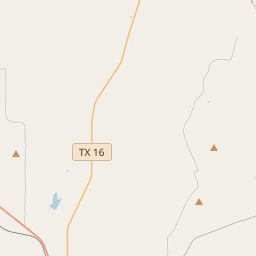Pecan Wells Cemetery
Historical marker location:






A pioneer community named Lookout began to develop in this area traversed by the Lampasas River and nearby Lookout Mountain during the 1870s and 1880s. Lookout School opened about one mile southeast of here in the late 1870s. This cemetery began with the burial of Barnard and Maria Schmith Pfluger's infant son Heinrich K. Pfluger in 1893.
In 1904 Civil War veteran and early area settler W. M. Kemp and his wife Margaret donated land here for cemetery purposes. According to local traditional the Kemps conveyed the land under the condition that grave sites continue to be available at no cost.
In the early 1900s Merrill Creek School was established about two miles west of this site. Lookout and Merrill schools closed in 1921 and a new school by the name of Pecan Wells was opened about one half mile west of the cemetery. At that time the community and cemetery were renamed Pecan Wells. Pecan Wells School closed in 1944 when it merged with the nearby Pottsville School System.
Maintained by an association of descendants of people buried here, the cemetery contains more than 200 graves including those of veterans of conflicts ranging from the Civil War to the Vietnam War
As one of the most visible programs of the Texas Historical Commission (THC), historical markers commemorate diverse topics in Texas history, including: the history and architecture of houses, commercial and public buildings, religious congregations, and military sites; events that changed the course of local and state history; and individuals who have made lasting contributions to the state, community organizations, and businesses.
The Texas Rangers, a famous law enforcement agency, were first organized in 1835 to protect settlers from Native American attacks.
The county itself was formed in 1858 and named after James Hamilton Jr., a notable figure in Texas' fight for independence from Mexico. The first permanent settlement in the area was established around 1855 and became known as Hamilton, which later became the county seat. The early settlers primarily engaged in farming, ranching, and cotton production.
During the Civil War, many of Hamilton County's residents joined the Confederate Army to defend the Southern cause. The county suffered several attacks by Native American tribes aligned with the Union during the conflict. Following the war, the county gradually recovered, and the population began to grow with the introduction of new industries such as limestone quarrying and milling.
By the early 20th century, Hamilton County had become an established agricultural region, known for its cotton, corn, and cattle production. However, the Great Depression hit the area hard, causing economic decline and depopulation. In recent decades, the county has diversified its economy, incorporating sectors like manufacturing, education, and healthcare.
Today, Hamilton County is a vibrant community that combines its rich history with modern development. Visitors can explore historical landmarks, enjoy recreational activities in the surrounding natural beauty, and experience the warmth of its friendly residents. The county continues to thrive, attracting new residents and businesses while cherishing its deep-rooted heritage.
Hamilton County Timeline
This timeline provides a glimpse into the major events and milestones that have shaped the history of Hamilton County, Texas.
- 1853: Hamilton County is created as a new county in the state of Texas.
- 1858: The county seat is established in the town of Hamilton.
- 1872: The Fort Worth and Rio Grande Railway is built through Hamilton County.
- 1882: The first newspaper, called The Hamilton Herald, is published in Hamilton.
- 1902: Hamilton County Courthouse, the current courthouse, is completed.
- 1929: The Great Depression causes economic hardships for Hamilton County residents.
- 1948: The town of Evant experiences a devastating tornado, resulting in multiple casualties.
- 1956: Lake Proctor is constructed as a recreational reservoir in Hamilton County.
- 1996: The Texas Historical Commission designates the city of Hico as a Texas Main Street community.
- 2017: Hamilton County celebrates its 165th anniversary since its establishment.